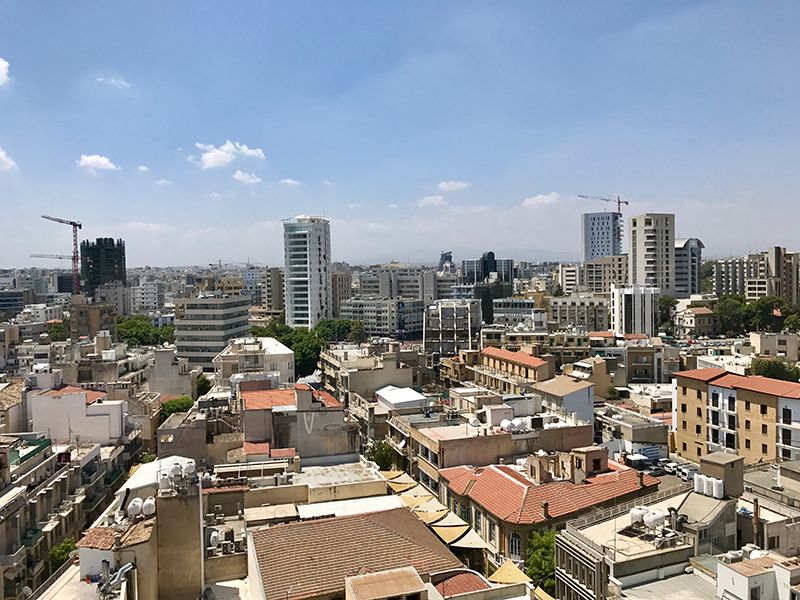
How coronavirus slashed traffic emissions in Nicosia
By M. Pikridas1, C. Savvides2, and J. Sciare1
Context and Objectives
Traffic emissions have been identified as a major contributor of air pollution in urban environments. However, their contribution to the atmospheric concentration level of major pollutants (e.g. Fine particles, Nitrogen oxides) remain hard to evaluate accurately and therefore difficult to predict.
Since March 14th 2020, Cyprus, along with almost half of the humanity, has been experiencing an unprecedented lockdown due to the coronavirus outbreak. This lockdown has drastically changed our daily habits and strongly restrained our movements. How much these measures have affected Air Quality? To which extent the observed decrease of traffic emissions has changed the concentration level of air pollution in our cities, and more generally in Cyprus?
The continuous monitoring of the major pollutants performed by the Air Quality section of the Department of Labour Inspection3 is offering us a unique opportunity to evaluate whether Air Quality was significantly improved in Cyprus, and if yes, where.
Methodology
We focus on two (2) pollutants, carbon monoxide (CO), which is derived from the incomplete combustion of carbon-containing fuel including traffic and biomass emissions, and nitrogen oxides (NOx), which come almost exclusively from the combustion of fossil fuel. Measurements of these two pollutants were collected at three sites of contrasted typology (Figure 1): Site “A – Regional” is located at Agia Marina Xyliatou and representative of the regional pollution (Eastern Mediterranean and Middle East). Site “B- Traffic” is located within the agglomeration of Nicosia and close to a busy road (i.e. sensitive to traffic emissions). Site “C – Urban”4 is also located within the agglomeration of Nicosia and representative of the urban background pollution of the city (i.e. as representative as possible from air pollution exposure of inhabitants). The selected data were obtained for three months (February, March, April 2020) and compared to those obtained for these three months in 2019. Daily (24h) and hourly averages for the 3 sites (A, B, C) and the two years (2019, 2020) are reported in Figure 2 and Figure 3, respectively. Graphs of the Figure 2 display average concentrations of the period 15/03-30/04 for 2019 (black dashed line) and 2020 (orange dashed line). Morning rush hours (5h30-8h30 local time) and evening commuting / residential heating (18h-24h local time) are colored in grey and brown, respectively, in Figure 3.
Air Quality in Cyprus during the lockdown
Away from Nicosia, both air pollutants are not affected by the lockdown (Top of Figure 2). This is evident as their average concentration in the regional background site of Agia Marina Xyliatou has not changed since the lockdown and is quite similar to that measured in 2019. In addition, if the hourly variation of each pollutant is examined, there is little difference in NOx. The diurnal profile of CO also has not changed since the lockdown (red and magenta lines on the graph) but is different since last year mainly because air masses during March 2019 originated from different parts of the planet than in 2020.
Air Quality in Nicosia during the lockdown
If we focus on the Nicosia urban Traffic site (site B), we note that CO and NOx levels decreased by 95 ppb and 13 ppb, respectively, since the lockdown. Percentagewise this translates into a CO decrease of 28% of NOx decrease of 57%. If we focus on Nicosia urban background (site C), we note that CO and NOx levels decreased by 51 ppb and 11 ppb, respectively, since the lockdown. Percentagewise this translates into a CO decrease of 23% of NOx decrease of 67%. These numbers are close to those obtained at the road site (site B) and confirm the major impact of the decrease in traffic emissions on air pollutant levels.
Diurnal variability of air pollution during the lockdown
The diurnal pattern of these two pollutants do not show a major trend at the regional background site of Agia Marina Xyliatou; this is aligned with the regional (long-range trans-boundary) origin of these pollutants at this site. On the other hand, these two pollutants show a very diurnal pattern in Nicosia (both the urban background and traffic site); with a maximum early morning / late evening during rush hours. Their diurnal pattern in 2019 and before lockdown is very similar, denoting here the major contribution of traffic emissions. Consistently with a decrease of traffic during lockdown these two pollutants have almost a flat pattern during commuting hours (which are no longer rush hours).
Conclusion and perspectives
Preliminary results have shown that the unprecedented lockdown we have experienced recently in Cyprus has revealed a major decrease of air pollution due to local traffic emissions in Nicosia. However, this improvement was not noticeable at a regional background site which is typically more influenced by trans-boundary air pollution.
A more exhaustive evaluation of the Air Quality impacts of the lockdown will be performed considering a wider range of air pollutants (e.g. fine particles), remote sensing (satellite-borne) observations, and modelling approaches.



References
- Climate and Atmosphere Research Center (CARE-C), The Cyprus Institute, Nicosia, Cyprus
- Air Quality Section, Department of Labour Inspection, Ministry of Labour, Welfare and Social Insurance, Nicosia, Cyprus
- Ministry of Labour, Welfare and Social Insurance; (website: https://www.airquality.gov.cy/)
- Residential area of the Strovolos municipality, away from busy roads



